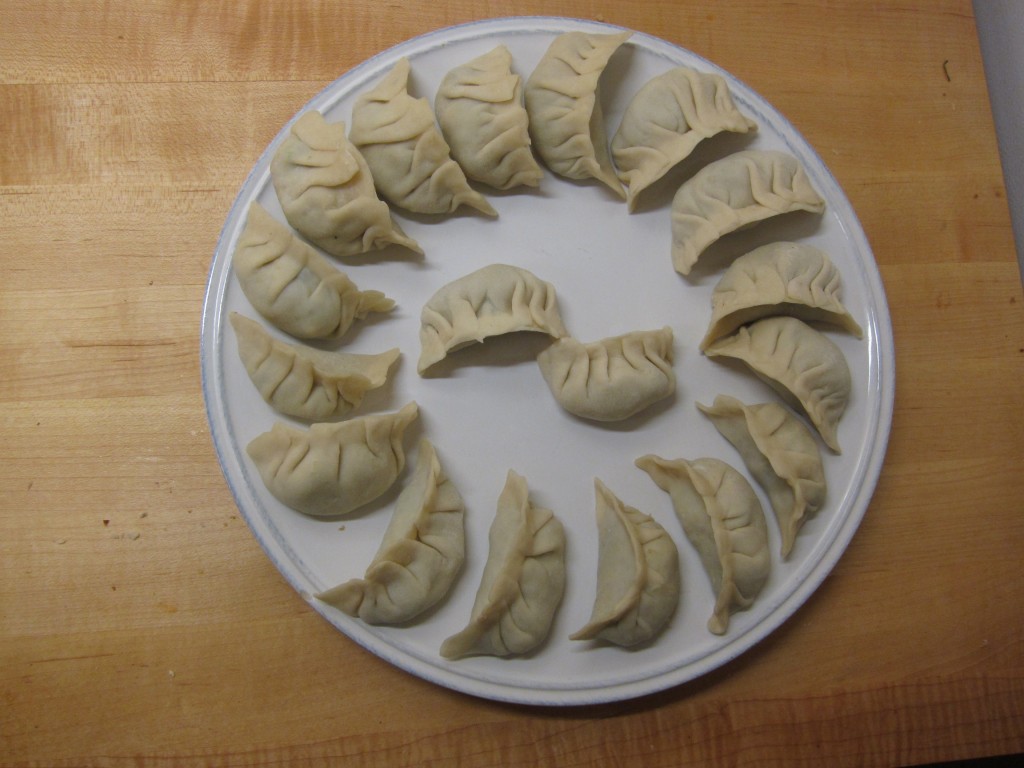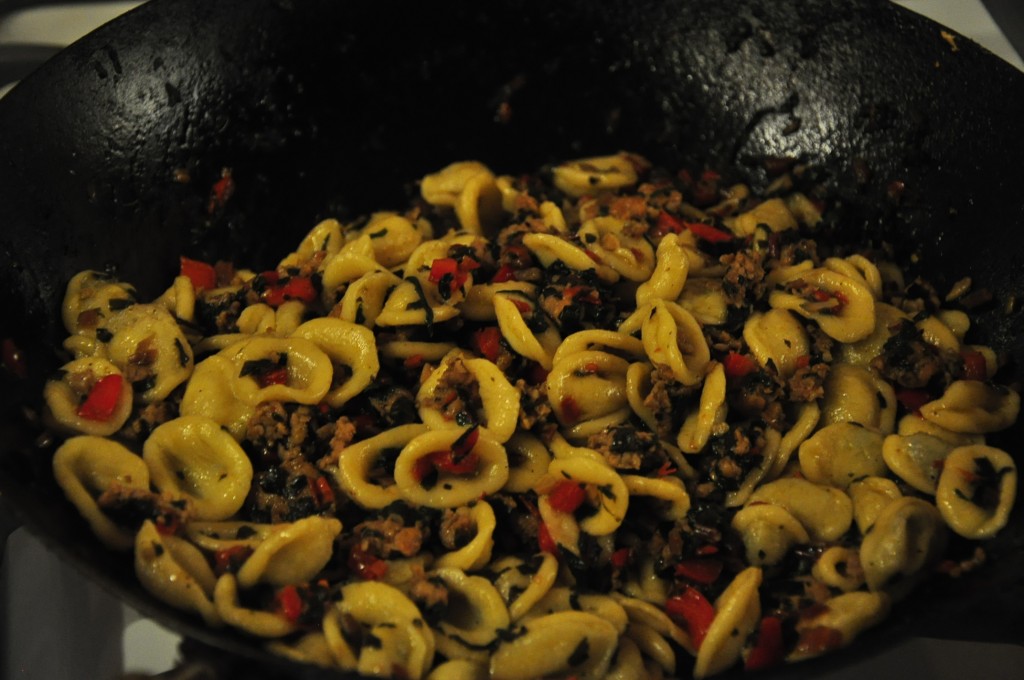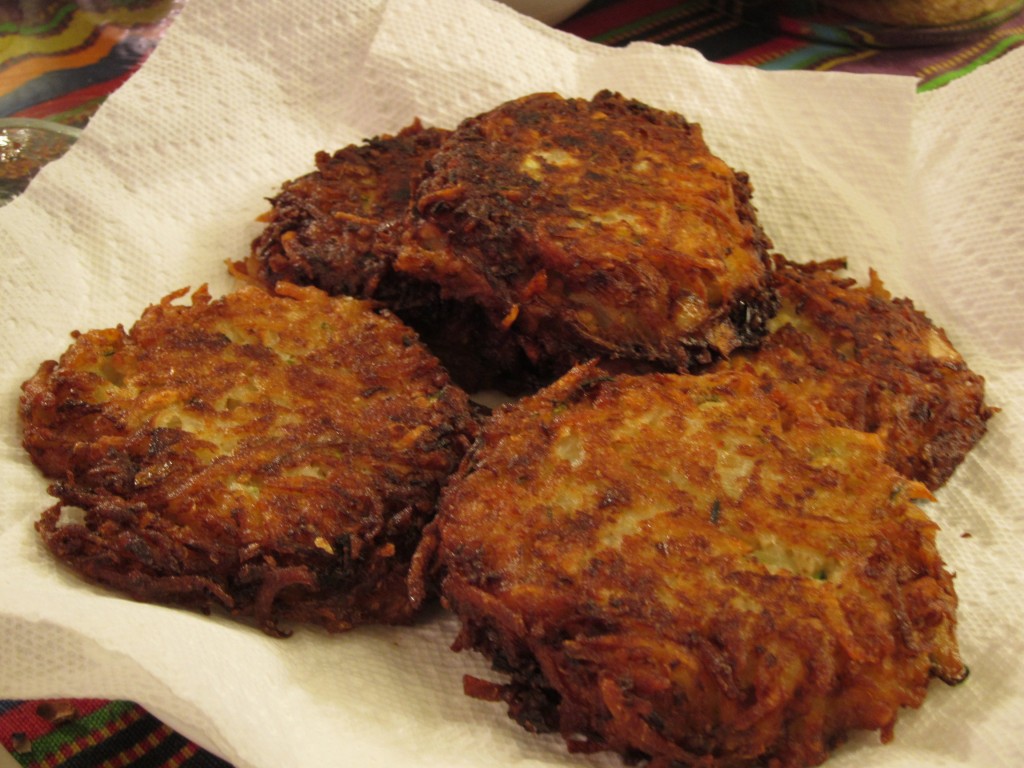As some of you may or may not know, since moving back to the Bay Area, I’ve been talking to my good friend Matt about starting up a dumpling company. Now, as of yet, our plans a still in the, well planning stages, but one thing we have made forward progress on is our recipe. Flavor-wise, we’re pretty close. We’re focusing on a pretty basic pork dumpling – pork, cabbage, garlic chives, ginger, garlic, soy and sugar. The thing that we’re doing differently than other times we’ve made dumplings, is grinding our own meat. So we’ve been experimenting with the different sizes of the grind trying to figure out what grind will give us the meaty and firm texture we want in a dumpling. Given Matt’s book learning, he’s taken to salting the pork before we grind it which not only adds flavor, but changes the texture of the meat. I think it dries it out and firms it up a little bit. In our first or second trial, we thought we’d figured it out: going with a large grind in order to maximize the chunky meat bits in the dumpling. However we found that while the individual chunks of meat were satisfying, the filling as a whole just wasn’t holding together very well after cooking (boiling). Perhaps too much cabbage? Perhaps the cabbage was not dry enough? Not enough mixing? Too much mixing? Did we need to add cornstarch? In taking a scientific approach we realized that there were so many variables. How could this be? It’s not rocket brain science surgery! I remembered that in my (vast) dumpling making experience, I would get my ground pork from a butcher in Chinatown and it was rather small grind, but the filling held together quite well even when I added a whole host of other ingredients and hand mixed it like crazy. So, keeping all the other ingredients proportionally consistent we decided to change course and try the small grind to see if that would impact the way the filling would hold together. This is what we discovered…








